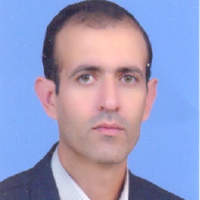The Effect of Rate and Application Method of Potassium on Yield and Yield Components of Cotton in Saline Condition
Author(s):
Abstract:
IntroductionSalinity is a major abiotic stress that affects approximately 7% of the worlds total land area. Cotton (Gossypium barbadense L.) is considered as one of the most important cash crops which is widely used for agricultural and industrial purposes. Although, cotton is classified as one of the most salt-tolerant major crops but its growth and development are adversely affected by soil or water salinity. Understanding salinity and fertilizer interaction can mitigate salinity stress and improving crop yield. Potassium (K) is an essential nutrient that affects most of the biochemical and physiological processes that are involved in plant resistance to biotic and abiotic stresses. Proper management of K fertilizer is especially important in saline soils where K application might reduce the adverse effects of salinity on plant growth and yield. There is a little information about rate and application method of K on yield and yield component of cotton in saline condition. The objective of this study was to determine the effects of rate and application method of K on yield and yield component of cotton in soil and water saline condition.
Materials and MethodsThe experiment was carried out at Sabzevar Agriculture and Natural Resources Research center (Haresabad), 30km southwest of Sabzevar (32◦32N, 51◦23E and 1630 above mean sea level),in 2014.This experiment was conducted as split plot design based on randomized complete block design with three replications. Factors were: K rate (75 and 150kg ha-1 Solopotash (containing 50% K2O and 18% S) comprising the main plot and application method (25%at planting% at first flowering and 50%at early boll development (25P�继), 25%at planting% at first flowering and 25%at early boll development (25P绛), 25%at planting% at vegetative stage (5-8 leaves stage), 25% at first flowering and 25% at early boll development (25P�绛酾), 25% at planting% at vegetative stage and 50% at first flowering (25P�继), and 25% at planting% at vegetative stage and 25%at early boll development (25P绛) as the subplot. The seeds planted had been acid-delinted and treated with chemicals against seed and seedling diseases. Plots consisted of six rows spaced 0.5 min row and 0.2 m in plant (10 plants m-2) and 6 m in length. To evaluate yield components of cotton including plant height, sympodial branch number, boll number, boll weight, 10 individual plants were selected randomly from final harvest area. At harvesting time one meter square from the beginning and a half meter around each plot was removed as a marginal effect. The remaining area was harvested by hand for determine of lint and biological yield. Seed-cotton samples were ginned to separate the fiber (lint) from the seed. Lint percentage (%) was calculated as the weight of lint to weight of the seed-cotton. The statistical analyses were performed by SAS software Ver. 9.1. The mean separation was done through Fischer least significant difference (FLSD) test at alpha 0.05.
Results and DiscussionAnalysis of variance showed that boll weight, seed cotton yield and biological yield were significantly affected by potassium rate, whereas plant height, number of sympodial branch, boll number and lint percentage was not affected by potassium rate. All traits were affected by potassium application method except plant height and lint percentage. Plant height, boll weight, seed cotton yield and lint percentage were affected by interaction of potassium rate and application method. Increasing of K level up to 150 kg ha-1 increased boll weight (23.64%), seed cotton yield (17.67%), and biological yield (9.86%) in comparison with the application of 75 kg ha-1. Plant height, sympodial branch number and lint percentage did not respond to K rate. K application as 25% at planting% at vegetative stage (5-8 leaves stage), 25% at first flowering and 25% at early boll development (25P�绛酾�) had the highest boll weight, seed cotton yield, biological yield and lint percentage. In both K rate, split application of K at planting, vegetative stage, flowering and early boll development (equally at each stage) had the highest seed cotton yield. Potassium application at flowering or early boll development had more positive effect on seed cotton yield than planting or vegetative stage.
ConclusionsThe best seed cotton yield could be achieved with a combination of high dose of K fertilizer and split application of K at planting, vegetative stage, flowering and early boll development (equally at each stage). Increased K rate increased seed cotton yield because of improved boll weight and boll number in saline condition. Boll weight had more correlated with seed cotton yield than boll number. The K application as 25% at planting% at vegetative stage (5-8 leaves stage), 25% at first flowering and 25% at early boll development (25P�绛酾�) gave higher cotton yields than other split applications in saline conditions.
Materials and MethodsThe experiment was carried out at Sabzevar Agriculture and Natural Resources Research center (Haresabad), 30km southwest of Sabzevar (32◦32N, 51◦23E and 1630 above mean sea level),in 2014.This experiment was conducted as split plot design based on randomized complete block design with three replications. Factors were: K rate (75 and 150kg ha-1 Solopotash (containing 50% K2O and 18% S) comprising the main plot and application method (25%at planting% at first flowering and 50%at early boll development (25P�继), 25%at planting% at first flowering and 25%at early boll development (25P绛), 25%at planting% at vegetative stage (5-8 leaves stage), 25% at first flowering and 25% at early boll development (25P�绛酾), 25% at planting% at vegetative stage and 50% at first flowering (25P�继), and 25% at planting% at vegetative stage and 25%at early boll development (25P绛) as the subplot. The seeds planted had been acid-delinted and treated with chemicals against seed and seedling diseases. Plots consisted of six rows spaced 0.5 min row and 0.2 m in plant (10 plants m-2) and 6 m in length. To evaluate yield components of cotton including plant height, sympodial branch number, boll number, boll weight, 10 individual plants were selected randomly from final harvest area. At harvesting time one meter square from the beginning and a half meter around each plot was removed as a marginal effect. The remaining area was harvested by hand for determine of lint and biological yield. Seed-cotton samples were ginned to separate the fiber (lint) from the seed. Lint percentage (%) was calculated as the weight of lint to weight of the seed-cotton. The statistical analyses were performed by SAS software Ver. 9.1. The mean separation was done through Fischer least significant difference (FLSD) test at alpha 0.05.
Results and DiscussionAnalysis of variance showed that boll weight, seed cotton yield and biological yield were significantly affected by potassium rate, whereas plant height, number of sympodial branch, boll number and lint percentage was not affected by potassium rate. All traits were affected by potassium application method except plant height and lint percentage. Plant height, boll weight, seed cotton yield and lint percentage were affected by interaction of potassium rate and application method. Increasing of K level up to 150 kg ha-1 increased boll weight (23.64%), seed cotton yield (17.67%), and biological yield (9.86%) in comparison with the application of 75 kg ha-1. Plant height, sympodial branch number and lint percentage did not respond to K rate. K application as 25% at planting% at vegetative stage (5-8 leaves stage), 25% at first flowering and 25% at early boll development (25P�绛酾�) had the highest boll weight, seed cotton yield, biological yield and lint percentage. In both K rate, split application of K at planting, vegetative stage, flowering and early boll development (equally at each stage) had the highest seed cotton yield. Potassium application at flowering or early boll development had more positive effect on seed cotton yield than planting or vegetative stage.
ConclusionsThe best seed cotton yield could be achieved with a combination of high dose of K fertilizer and split application of K at planting, vegetative stage, flowering and early boll development (equally at each stage). Increased K rate increased seed cotton yield because of improved boll weight and boll number in saline condition. Boll weight had more correlated with seed cotton yield than boll number. The K application as 25% at planting% at vegetative stage (5-8 leaves stage), 25% at first flowering and 25% at early boll development (25P�绛酾�) gave higher cotton yields than other split applications in saline conditions.
Keywords:
Language:
Persian
Published:
Iranian Journal of Field Crops Research, Volume:14 Issue: 3, 2016
Pages:
514 to 525
magiran.com/p1638813
دانلود و مطالعه متن این مقاله با یکی از روشهای زیر امکان پذیر است:
اشتراک شخصی
با عضویت و پرداخت آنلاین حق اشتراک یکساله به مبلغ 1,390,000ريال میتوانید 70 عنوان مطلب دانلود کنید!
اشتراک سازمانی
به کتابخانه دانشگاه یا محل کار خود پیشنهاد کنید تا اشتراک سازمانی این پایگاه را برای دسترسی نامحدود همه کاربران به متن مطالب تهیه نمایند!
توجه!
- حق عضویت دریافتی صرف حمایت از نشریات عضو و نگهداری، تکمیل و توسعه مگیران میشود.
- پرداخت حق اشتراک و دانلود مقالات اجازه بازنشر آن در سایر رسانههای چاپی و دیجیتال را به کاربر نمیدهد.
In order to view content subscription is required
Personal subscription
Subscribe magiran.com for 70 € euros via PayPal and download 70 articles during a year.
Organization subscription
Please contact us to subscribe your university or library for unlimited access!




